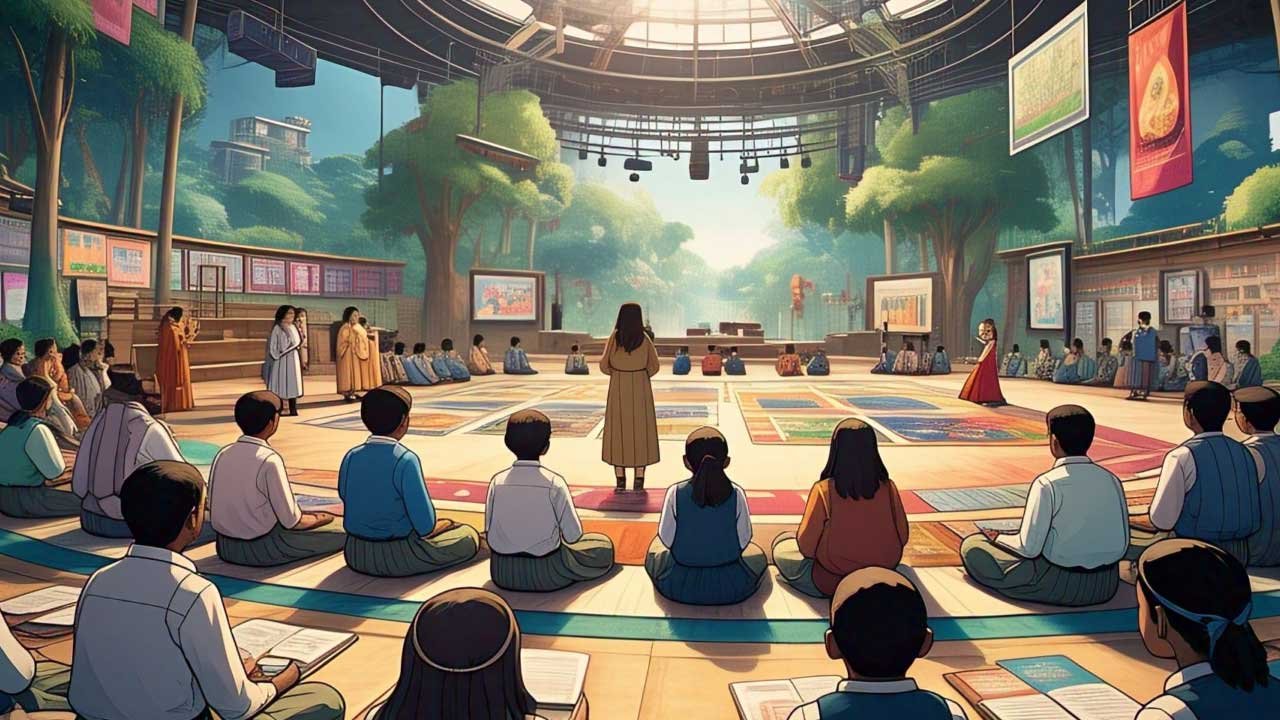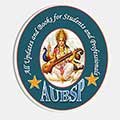Bangladesh’s education system is a structured, multi-tiered framework that aligns academic milestones with age, guiding learners from early childhood to advanced studies. Beginning with pre-primary education for ages 3–5, it progresses through compulsory primary education (ages 6–10), junior and secondary education (ages 11–15), and higher secondary education (ages 16–17), culminating in tertiary education for those 18 and older.
Each stage builds upon the previous one, with major national exams like PECE, SSC, and HSC serving as pivotal transitions. Alongside the mainstream path, Bangladesh also offers alternative streams such as Madrasa education and technical-vocational training, ensuring inclusive access to both academic and skill-based learning. Together, these pathways aim to foster personal growth and contribute to national development.
Navigating the Educational Landscape of Bangladesh: A Comprehensive Overview by Age
Bangladesh has established a structured education system that aims to provide a progressive learning journey for its citizens, categorized by age and academic milestones. From the foundational years of pre-primary education to the advanced pursuits of tertiary studies, the system is designed to equip individuals with the knowledge and skills necessary for personal and national development. Let’s delve into the age-wise progression through the educational tiers in Bangladesh.
1. Laying the Foundation: Pre-Primary Education (Age 3-5)
The initial step in Bangladesh’s formal education system is pre-primary education, targeting children between the ages of 3 and 5. This crucial stage typically spans one to two years, often concluding the year before a child enters Grade 1. Pre-primary education is primarily delivered through kindergarten schools and pre-primary sections attached to primary schools.
The core objective at this level is to foster basic literacy, numeracy, and essential social skills. Through play-based learning, interactive activities, and early exposure to language and numbers, children develop a strong foundation for future academic success. This stage emphasizes holistic development, nurturing curiosity, creativity, and the ability to interact positively with peers and educators.
2. The Pillars of Learning: Primary Education (Age 6-10)
Formal schooling commences with primary education, which is compulsory for all children aged 6 to 10. This five-year cycle encompasses Classes 1 through 5 and forms the bedrock of the entire education system. The curriculum focuses on fundamental subjects such as Bengali, English, Mathematics, Science, and Social Studies, aiming to build a strong base of knowledge and critical thinking skills.
At the culmination of Class 5, students typically undertake the Primary Education Completion Examination (PECE). This national-level assessment evaluates the learning outcomes achieved during the primary years and serves as a significant milestone in a student’s educational journey. The results of the PECE often play a role in subsequent educational pathways.
3. Expanding Horizons: Secondary Education (Age 11-15)
Secondary education in Bangladesh is a pivotal phase, divided into two distinct levels: Junior Secondary and Secondary.
a. Junior Secondary (Lower Secondary) – Age 11-13 (Classes 6-8): This three-year stage builds upon the foundation laid in primary education, introducing students to more complex concepts across a broader range of subjects. While there isn’t a national public examination at the end of Junior Secondary education, schools conduct their own internal assessments to evaluate student progress and readiness for the next level. These school-based assessments play a crucial role in monitoring student learning and informing teaching practices. Historically, there was a Junior School Certificate (JSC) examination which was a public examination at the end of Class 8, but it has since been discontinued.
b. Secondary (Upper Secondary) – Age 14-15 (Classes 9-10): This two-year phase culminates in a significant national public examination: the Secondary School Certificate (SSC). The SSC examination is a high-stakes assessment that significantly influences students’ future academic and career options. Students typically specialize in different streams (such as Science, Humanities, and Business Studies) during this stage, allowing for a more focused curriculum. The SSC results are a key criterion for admission to Higher Secondary education.
4. The Gateway to Higher Learning: Higher Secondary Education (Age 16-17)
Following the SSC, students proceed to Higher Secondary education, also commonly referred to as college. This two-year program covers Classes 11 and 12. The curriculum further delves into specialized subjects chosen by the students, building upon their chosen stream in secondary education.
The culmination of Higher Secondary education is the Higher Secondary Certificate (HSC) examination, another crucial national public examination. The results of the HSC are paramount for gaining admission to universities and other tertiary education institutions in Bangladesh. The HSC marks a significant transition point, paving the way for specialized higher studies.
5. Pursuing Knowledge and Expertise: Tertiary Education (Age 18 and Above)
Tertiary education is the apex of the formal education system in Bangladesh, open to individuals aged 18 and above who have successfully completed their HSC. This level is primarily offered by universities, degree colleges, and polytechnic institutes. Tertiary education encompasses various levels of academic pursuit:
Undergraduate (Bachelor’s Degree): These programs typically span three to four years, providing in-depth knowledge in specific academic disciplines. Examples include Bachelor of Arts (BA), Bachelor of Science (BSc), Bachelor of Commerce (BCom), and Bachelor of Engineering (BEng).
Postgraduate (Master’s Degree): Students who have completed a Bachelor’s degree can pursue a Master’s degree, which generally takes one to two years. Master’s programs offer advanced specialization and research opportunities within a chosen field, such as Master of Arts (MA), Master of Science (MSc), and Master of Business Administration (MBA).
Doctorate (PhD): The highest academic degree, a PhD, typically requires three to five years or even more of rigorous research and scholarly work. PhD programs focus on contributing original knowledge to a specific field of study.
Alternative Educational Pathways:
Beyond the mainstream general education system, Bangladesh also offers alternative educational streams:
Madrasa Education: This parallel system provides Islamic education, integrating religious studies with general academic subjects. The Madrasa system has its own progression, starting from Ebtedayee (equivalent to primary) and advancing through Dakhil (equivalent to SSC), Alim (equivalent to HSC), Fazil (Bachelor’s equivalent), and Kamil (Master’s equivalent) levels. These institutions play a significant role in providing education rooted in Islamic principles.
Technical and Vocational Education: Recognizing the importance of skilled manpower, Bangladesh offers technical and vocational education and training (TVET) from Class 9 onwards. This stream provides practical skills and knowledge in various trades and professions, leading to diploma and certificate courses. These programs are crucial for developing a skilled workforce and contributing to economic growth. Examples include diplomas in engineering, textiles, and agriculture, as well as vocational certificates in various trades.
In conclusion, the education system in Bangladesh is a multi-tiered structure designed to cater to different age groups and learning needs. From the foundational pre-primary years to the specialized domains of tertiary education and the alternative streams of Madrasa and technical-vocational training, the system strives to provide pathways for individual growth and national progress. The key public examinations at the end of primary (PECE), secondary (SSC), and higher secondary (HSC) levels serve as important benchmarks in a student’s academic journey, shaping their future educational and career prospects. The continuous evolution of the system reflects Bangladesh’s commitment to empowering its youth through education.
FAQs on Age-wise Education System in Bangladesh
What is the structure of the education system in Bangladesh?
The education system in Bangladesh is divided into five main levels: Pre-Primary (ages 3–5), Primary (ages 6–10), Secondary (ages 11–15), Higher Secondary (ages 16–17), and Tertiary Education (age 18 and above). There are also alternative streams such as Madrasa and technical-vocational education.
At what age does formal education start in Bangladesh?
Formal education typically starts at age 6 with entry into Class 1 of primary school, though pre-primary education begins as early as age 3.
Is pre-primary education compulsory in Bangladesh?
Pre-primary education is not mandatory but is increasingly encouraged to prepare children for primary schooling.
How long is the primary education cycle?
Primary education lasts for five years, covering Classes 1 through 5, typically for children aged 6 to 10.
What exam is taken at the end of primary education?
Students take the Primary Education Completion Examination (PECE) at the end of Class 5.
What are the stages of secondary education in Bangladesh?
Secondary education is divided into Junior Secondary (Classes 6–8, ages 11–13) and Secondary (Classes 9–10, ages 14–15).
Is there an exam at the end of Junior Secondary?
Previously, students took the Junior School Certificate (JSC) exam at the end of Class 8, but it has been discontinued. Now, schools conduct internal assessments.
What is the SSC exam?
The Secondary School Certificate (SSC) is a national exam taken at the end of Class 10, crucial for admission into Higher Secondary education.
What are the different streams offered in Secondary education?
Students typically choose from Science, Humanities, or Business Studies streams during secondary education.
What is Higher Secondary education?
Higher Secondary education covers Classes 11 and 12 (ages 16–17), often referred to as college.
What is the HSC exam?
The Higher Secondary Certificate (HSC) exam is taken at the end of Class 12 and is required for university admission.
When can students enter tertiary education in Bangladesh?
Students can pursue tertiary education after passing the HSC exam, usually starting at age 18.
What are the levels of tertiary education in Bangladesh?
Tertiary education includes undergraduate (Bachelor’s), postgraduate (Master’s), and doctoral (PhD) programs.
How long does a Bachelor’s degree typically take in Bangladesh?
A Bachelor’s degree usually takes three to four years, depending on the field of study.
What are common postgraduate degrees in Bangladesh?
Popular postgraduate degrees include Master of Arts (MA), Master of Science (MSc), and Master of Business Administration (MBA), generally lasting one to two years.
What is the duration of a PhD in Bangladesh?
A PhD usually requires three to five years or more and involves original research in a specific field.
What is Madrasa education?
Madrasa education is an Islamic education system running parallel to the general stream, with its own structure including Ebtedayee, Dakhil, Alim, Fazil, and Kamil levels.
How is technical and vocational education structured?
Technical and vocational education begins at the secondary level (Class 9 onwards) and includes diploma and certificate programs in various trades.
Are Madrasa and vocational students eligible for university?
Yes, students from both streams can pursue higher education if they meet the eligibility criteria for universities.
Are there any mandatory public examinations in the education system?
Yes, mandatory public exams include the PECE (end of primary), SSC (end of secondary), and HSC (end of higher secondary).
What is the significance of the SSC and HSC exams?
These exams determine access to higher levels of education and influence future academic and career opportunities.
Can students switch streams (e.g., from Humanities to Science)?
Stream switching is generally restricted and depends on previous academic performance and institutional policies.
Is education free in Bangladesh?
Primary education is free and compulsory. However, costs may arise at secondary and higher levels, especially in private institutions.
What role does the government play in education?
The government oversees curriculum, administers public exams, provides free primary education, and promotes literacy and skill development.
How is student progress assessed in primary and secondary education?
Student progress is assessed through class tests, annual exams, and public examinations like the PECE, SSC, and HSC.
What are the challenges in the education system of Bangladesh?
Challenges include resource constraints, teacher shortages, regional disparities, and the need for more practical and inclusive learning approaches.
Is private education available in Bangladesh?
Yes, private schools and colleges operate alongside public institutions and often offer international curricula.
What is the language of instruction in schools?
The primary language of instruction is Bengali, though English is also taught and used in many private and urban schools.
How does the education system support national development?
By fostering literacy, critical thinking, and professional skills, the education system aims to build human capital and drive socio-economic growth.



Leave a Reply
You must be logged in to post a comment.